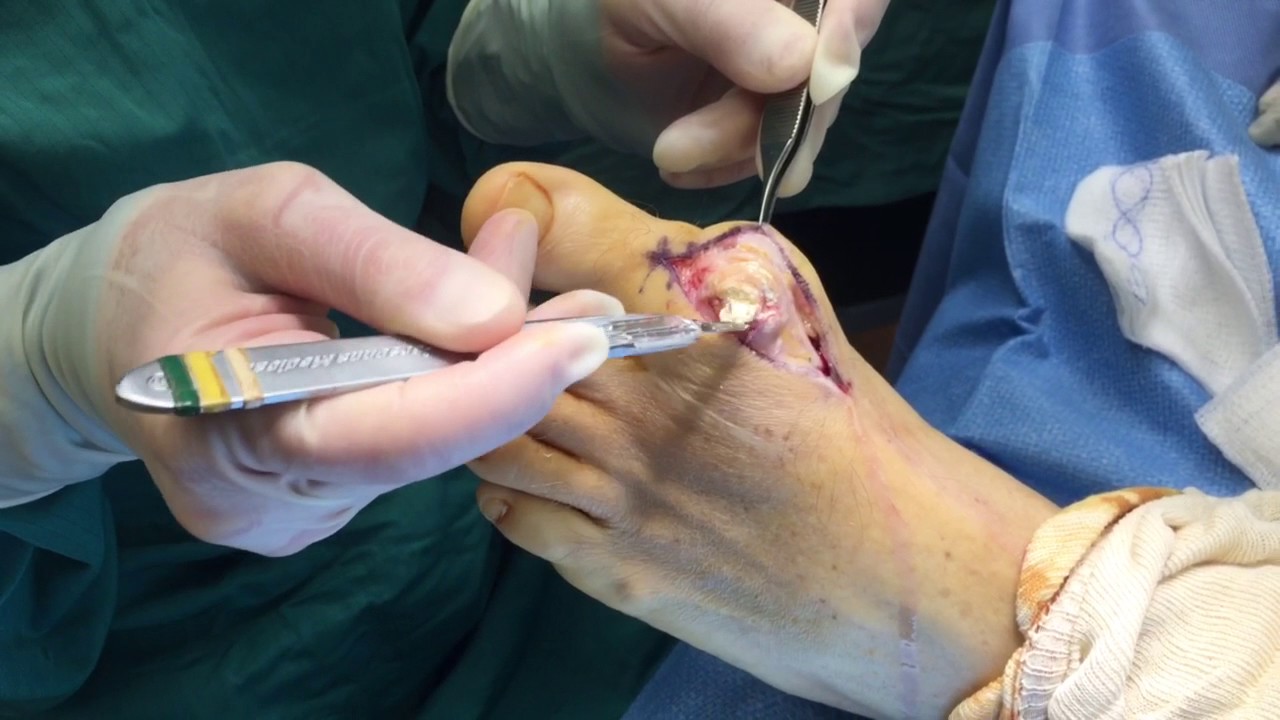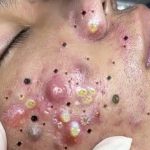How to remove an Ingrown Nail, Ingrown Toenails.
Please scroll down to watch the video.👇👇
Here’s a detailed, medically accurate guide on how to remove and treat an ingrown toenail, depending on its severity. This includes step-by-step methods, safety tips, and reference sources from trusted medical organizations.
🧠 What Is an Ingrown Toenail?
An ingrown toenail (onychocryptosis) occurs when the corner or edge of the toenail grows into the surrounding skin. This can cause pain, redness, swelling, and infection if untreated.
📚 Trusted Source:
-
American Academy of Orthopaedic Surgeons (AAOS): Ingrown Toenail
-
Mayo Clinic:
🏠 Home Treatment (For Mild Cases)
✅ When to Use Home Treatment:
-
No signs of infection (no pus or extreme redness)
-
Mild to moderate discomfort
-
Good circulation and health
🔧 Materials:
-
Warm water + Epsom salt (optional)
-
Clean tweezers or cotton swab
-
Antibacterial ointment (e.g., Neosporin)
-
Cotton ball or dental floss
-
Bandage or gauze
🪜 Step-by-Step Instructions:
1. Soak the Foot
-
Soak in warm, soapy water for 15–20 minutes, 2–3 times daily
-
Add Epsom salt (optional) to soften the skin and reduce inflammation
2. Lift the Nail Gently
-
After soaking and drying, gently lift the edge of the ingrown nail
-
Insert a small piece of cotton or dental floss between the nail and skin
-
Replace daily after soaking
3. Apply Antibiotic Ointment
-
Prevent infection with topical antibiotic cream
-
Cover lightly with a bandage
4. Wear Open-Toed or Loose Shoes
-
Avoid pressure on the toe
-
Use sandals when possible
🛑 When to See a Doctor
If you notice any of the following:
-
Pus, severe pain, or spreading redness
-
Fever
-
You have diabetes, poor circulation, or neuropathy
Seek professional help promptly.
🏥 Medical Treatment Options
1. Partial Nail Removal (Partial Nail Avulsion)
-
Local anesthesia is given
-
The doctor removes the ingrown portion of the nail
-
Sometimes applies phenol to prevent regrowth (called phenolization)
📚 Reference:
Zuber TJ. Ingrown Toenail Removal. American Family Physician. 2002.
2. Total Nail Removal
-
Only in severe or chronic cases
-
Nail may take months to regrow or not regrow at all
3. Antibiotics
-
Given if there is infection
-
Oral antibiotics like amoxicillin-clavulanate or clindamycin
✅ Prevention Tips
| Tip | Why It Helps |
|---|---|
| Cut nails straight across | Avoids skin overlap |
| Avoid tight shoes | Prevents nail pressure |
| Keep feet clean and dry | Reduces bacterial infection risk |
| Avoid nail trauma | Prevents nail misgrowth |
📌 Summary Chart
| Condition | Treatment Plan |
|---|---|
| Mild pain | Soak + cotton under nail + ointment |
| Moderate pain | Medical lifting or edge trimming |
| Severe/infected | Partial nail removal + possible antibiotics |
| Recurrent | Permanent removal of nail edge (phenol) |
If you’d like, I can also:
-
Provide a printable checklist
-
Show illustrations of each step
-
Help find a local podiatrist
Let me know what you’d prefer next.
Certainly. Here’s an in-depth, medically referenced explanation of how to remove and treat ingrown toenails, with citations from peer-reviewed journals, hospital guidelines, and professional medical associations.
🧠 What Is an Ingrown Toenail?
Ingrown toenail (onychocryptosis) occurs when the edge of a toenail, usually the big toe, grows into the periungual skin, causing pain, swelling, and possibly infection.
🔍 Pathophysiology
-
Mechanism: Lateral nail plate pierces the nail fold → triggers inflammatory response → pain, erythema, swelling, and granulation tissue.
-
Most Common Site: Great toe (hallux)
-
Risk Factors:
-
Improper nail trimming (rounded or too short)
-
Tight shoes or socks
-
Trauma to the toe
-
Obesity
-
Genetic predisposition (nail shape)
-
📚 Source:
-
Heidelbaugh JJ, Lee H. Management of the ingrown toenail. Am Fam Physician. 2009;79(4):303-308.
🏠 Conservative (Non-Surgical) Management
Best for: Stage 1 (pain, mild inflammation, no pus)
🔧 Step-by-Step:
1. Warm Water/Epsom Salt Soak
-
Soak foot in warm water (or dilute Epsom salt solution)
-
Duration: 15–20 minutes, 2–4 times daily
-
Purpose: Reduces inflammation and softens tissue
2. Cotton-Wick or Dental Floss Technique
-
After soaking and drying the toe, gently lift the nail edge using a sterile instrument.
-
Place a small bit of cotton or dental floss underneath the nail.
-
Replace daily after each soak.
3. Topical Antibiotics
-
Apply mupirocin or bacitracin cream to reduce bacterial colonization
-
Cover with sterile dressing
4. Footwear Adjustments
-
Avoid tight-fitting or high-pressure shoes
-
Use open-toe footwear until resolved
📚 Reference:
-
Mayo Clinic Staff. Ingrown toenail: Self-care.
🚨 When to Seek Medical Help
Seek professional care if:
-
Moderate to severe pain
-
Pus or yellow-green drainage
-
Fever or spreading redness
-
Diabetes, peripheral arterial disease, or neuropathy present
🏥 Medical/Surgical Treatments
▶️ 1. Partial Nail Avulsion with Phenolization
-
Indication: Recurrent ingrown nails, infected cases
-
Procedure:
-
Inject digital block with lidocaine (no epinephrine)
-
Use nail splitter to remove 1/5 to 1/4 of nail plate
-
Cauterize nail matrix with 88% phenol (3 applications, 30 seconds each)
-
-
Healing: 2–3 weeks with dressing changes
📚 References:
-
Tisi PV, Than M. A simple method of treating ingrowing toenails. Br J Gen Pract. 1994;44(379):546.
-
Richert B, André J. Onychocryptosis (Ingrown toenails). Clin Dermatol. 2010 Mar-Apr;28(2):230–232. DOI:10.1016/j.clindermatol.2009.12.005
▶️ 2. Total Nail Avulsion
-
Rarely needed except in very severe or distorted nail conditions
▶️ 3. Nail Matrixectomy
-
Chemically or surgically destroys the matrix to prevent regrowth
-
Methods: Phenol, sodium hydroxide, or surgical curettage
📚 Reference:
-
Gerritsma-Bleeker CL, Klaassen MF. Surgical treatment of ingrowing toenail by radical excision of the nailfold. J Eur Acad Dermatol Venereol. 2002;16(6):522–525.
💊 Antibiotic Therapy
Use if:
-
Infection is present (redness, swelling, pus)
-
Systemic signs (fever, lymphangitis)
Commonly prescribed antibiotics:
-
Cephalexin
-
Amoxicillin-clavulanate
-
Clindamycin (for penicillin-allergic patients)
📚 Reference:
-
Sapico FL, et al. Foot infections. Clin Infect Dis. 1997;25(6):1318–1326.
🧼 Prevention Strategies
| Strategy | Rationale |
|---|---|
| Cut nails straight across | Prevents skin overlap on corners |
| Avoid trimming nails too short | Leaves nail edge vulnerable to embedment |
| Wear roomy shoes | Reduces lateral nail pressure |
| Maintain foot hygiene | Prevents fungal/bacterial colonization |
📚 Cleveland Clinic: Foot and Nail Care Tips – Link
🧾 Summary Table
| Stage | Symptoms | Treatment |
|---|---|---|
| Stage 1 | Mild pain, no pus | Soaks, cotton wedge, topical antibiotic |
| Stage 2 | Swelling, drainage, pain | Partial nail avulsion with/without phenol |
| Stage 3 | Chronic or recurring case | Partial matrixectomy or full avulsion |
| Diabetics | Any symptoms | See podiatrist immediately |
Would you like:
-
A printable guide for patients?
-
A visual diagram of partial nail avulsion?
-
Information specific to diabetic foot care?


